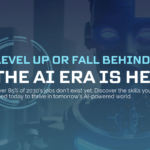OpenAI’s O3 model is the latest advancement in artificial intelligence, designed to tackle complex tasks with improved reasoning and intelligence. Imagine having a super-smart assistant that can help you solve tricky math problems, write code, or even generate creative stories! The O3 model represents a significant leap from its predecessor, the O1 model, by enhancing its ability to think critically and logically before providing answers. This makes it not just a tool for answering questions but a partner in problem-solving.
Key Features
Enhanced Reasoning Capabilities
The O3 model introduces several innovative features that set it apart from earlier models:
- Adjustable Thinking Time: Users can choose how long the model should “think” before responding, allowing for more thoughtful and accurate answers.
- Superior Performance: In various benchmarks, O3 has outperformed O1 significantly. For instance, it scored 71.7% on coding tests compared to O1’s 48.9%.
- Advanced Learning: The model can adapt to new tasks that it has never encountered before, showcasing its ability to learn from limited examples.
These advancements position the O3 model as a frontrunner in AI technology, making it more capable than its predecessors.
Capabilities
What Can OpenAI O3 Do?
The O3 model boasts impressive capabilities across various domains:
- Text Generation: It can create coherent and contextually relevant text, making it useful for writing assistance or content creation.
- Problem-Solving: Whether it’s math, coding, or scientific queries, the O3 model excels at solving complex problems. For example, it achieved a remarkable 96.7% accuracy on advanced math tests.
- Coding Assistance: With enhanced coding skills, the O3 model can help developers write and debug code more efficiently.
These capabilities make the O3 model a versatile tool for users ranging from students to professionals.
Real-World Applications
How Can the O3 Model Be Used?
The potential applications of the O3 model span various industries:
- Education: Teachers and students can use the model as a tutoring aid, assisting with homework and providing explanations for difficult concepts.
- Healthcare: In medical settings, the model could help analyze patient data or assist in research by generating insights from complex datasets.
- Business: Companies can leverage the O3 model for market analysis, customer support automation, and even strategic decision-making based on data trends.
These applications highlight how the O3 model can enhance productivity and innovation across different sectors.
Limitations and Ethical Considerations
Challenges Ahead
Despite its impressive capabilities, the O3 model is not without limitations:
- Cost: Running the O3 model can be expensive due to high computational demands. This might limit access for some users.
- Ethical Concerns: As with any powerful technology, there are risks associated with misuse. The potential for privacy violations or unintended consequences necessitates careful regulation and ethical guidelines.
OpenAI is aware of these challenges and is currently conducting safety testing before a wider release to ensure responsible usage of the technology.
In conclusion, OpenAI’s new O3 model represents a significant step forward in AI capabilities. With its enhanced reasoning skills and diverse applications, it promises to revolutionize how we interact with technology while also raising important ethical considerations that must be addressed. As we look to the future, the potential of AI continues to grow, inviting curiosity and caution in equal measure.












